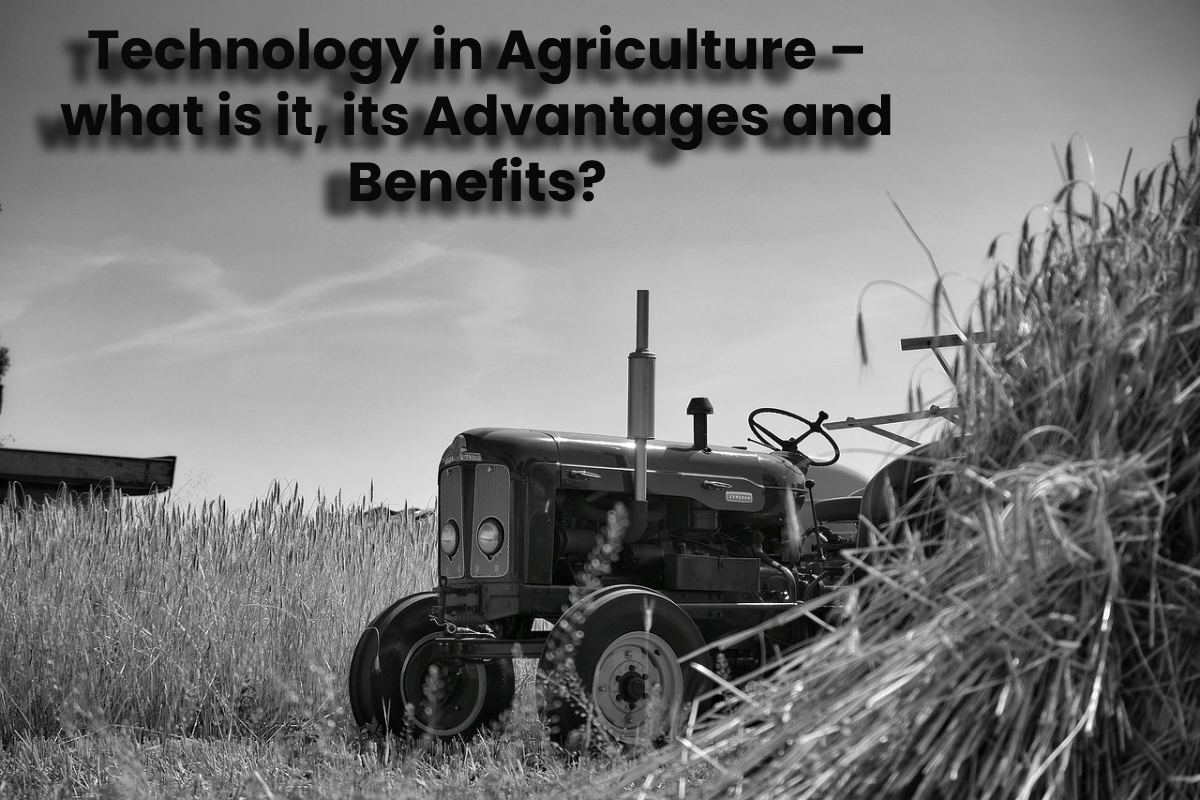The technology goes hand in hand with agriculture because the farmer has always sought to facilitate the hard work that involves the field. From the moldboard plow to the tractors connected via satellite to your mobile phone, technology in agriculture involves advances and improvements in the efficiency of your farm.
Table of Contents
Technology in Agriculture
We can define technology in agriculture as any tool that represents an advance in the working model, and that improves the efficiency of a farm. Although we hardly perceive it, many of the activities and tasks that carry out on a workday in the field involve the use of technology.
In the field, technology must meet three objectives:
- Facilitate, or directly carry out, the work of farmers.
- Increase crop yields.
- Save on production inputs.
The idea is to carry out agricultural work with the minimum time and the least possible personnel. For example, think about the advancement of the tractor. The use of the machine implied a substantial improvement in working efficiency compared to animal traction. Today, the most powerful tractors allow you to get a job done in much less time than the first-ever invented.
Farmers are aware of the advantages that technology offers in agriculture, so the vast majority want to use the latest and advanced technology possible. In modern times, the modernization of the field has reached such a point that we have already talked about smart agro, agrotech, or Agricultural Technology – concepts that we can all summarize as precision agriculture. That is, computing at the service of agriculture.
Perhaps you relate the term to using drones to get high-resolution images of crops to help you estimate fertilization needs, or GPS navigation to harvest without driving the tractor. But it goes much further. It is a digital revolution that also reaches the field, which leaves us to solve a few challenges. Challenges that have to do with the agricultural and food sector and very ambitious goals related to this overpopulated, globalized planet and in which the resources are finite.
Advantage of Technology in Agriculture
Technology must help optimize the profitability of a farm, so it must be economical. Only then will it be worth implementing. For example, a machine used to collect the olives from an olive farm must entail a lower cost than that which would entail harvesting manually. This must assess in each case.
The digitization of the field allows us to increase agricultural exploitation yields and reduce the inputs. We are applying precision agriculture to crops results in better ground preparation, providing plants with only the necessary nutrients, the exact pesticides to fight pests and diseases that affect them, and better-distributing inputs in the field. If a technology is going to provide a benefit to the farmer, its price cannot be greater than the benefit it implies. For example, a fungicide for a wheat crop that allows for harvesting 10% more, cannot exceed, per hectare, the value of 10% of the obtained harvest.
Benefits of Applying Technology in Agriculture
As we have seen, precision agriculture, thanks to technology, allows farmers to save costs. Thanks to the advances, it is no longer necessary to uniformly apply water, fertilizers, and pesticides throughout the farm with the Cost involved. Instead, technology allows applying the minimum amounts required and doing it in specific areas, really those that need it.
One of the great benefits for the farmer using any type of agricultural technology is saving time. Whether you use a plow or a drone. Both tools allow you to complete tasks in much less time than if you did not have them. Herein lies one of the keys to technology. With this factor in mind, management software has to create.
They make it easy to organize paperwork. For example, digitizing the field notebook, writing down the costs of the work carried out, etc. Having all the information regarding the plots on a mobile device, among other things. Will save you a lot of work at the end of the campaign.
Thus, we can Summarize some of the Benefits of Technology in Agriculture as follows:
- Crop productivity increases.
- Low water consumption, fertilizers, and pesticides affect the product’s final product price. For example, a drip irrigation system saves water.
- Chemical discharges to rivers and groundwater decrease.
- Increases the safety of workers on the farm.
- It enables greater control of the exploitation by being able to consult information on past harvests.
- Improves the efficiency of crops.
- Increases the food quality of the products.
- The environmental and ecological impact reduces.
- The same work is done involving fewer people.
- The farmer delegates technology to perform tasks that would take up his time. This way, you have time to plan and improve the management of your farm.
One of the biggest advantages of using technology in agriculture is the possibility of developing greener agricultural practices. Applying technology to the field effects in terms of environmental efficiency.
If the technical aid provides complete information on the plot and the crop. The farmer will be able to preserve resources and not waste them. Land depletion is avoided and better cared for.
Because of all these advantages, more and more small and medium farms continue to incorporate advances in agricultural technology into their routine. We could say that it is almost essential to have it on your farm.
And all this technology, which includes management tools, helps you organize and make the most of your plots.
With Agroptima, you will have management software at your fingertips that are capable of handling all the information related to your farm. It will be available anytime, anywhere in the palm of your hand, so you can assess which agricultural technologies are best for you. Do you want to discover it? Try Agroptima for free.

